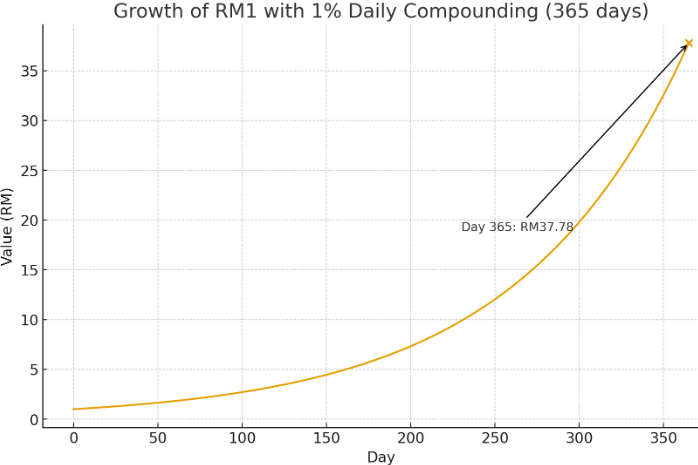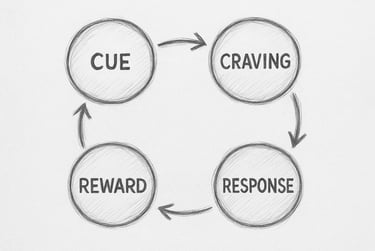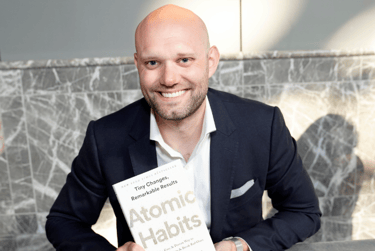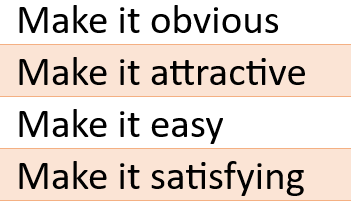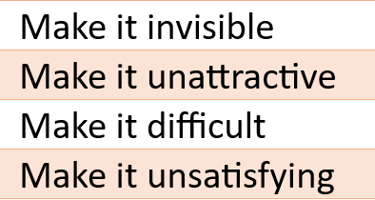Understanding the Power of Atomic Habits: Small Changes for Big Results
BOOK
9/27/20254 min read
I used to think change had to be huge to matter - something like running a marathon overnight, while I had never run a mile before. I believed transformation required dramatic leaps. Well, I was wrong. Reading James Clear’s Atomic Habits completely shifted my mindset. Clear’s central idea is deceptively simple: small, consistent changes of just 1% can compound into life-changing results.
It’s not always easy to wrap our heads around this. As humans, we naturally look for dramatic results, instant gratification, or “defining moments” that change everything. But the magic of atomic habits lies in their subtlety. Small, repeated actions often feel inconsequential, but over time, they shape who we are and what we achieve.
1. The 1% Rule: Tiny Habits, Big Results
Improving just 1% every day may sound trivial, even pointless. Human nature makes us sceptical. How much can one extra page of reading, one additional push-up, or one kind word really matter? Let’s break it down with numbers.
Analytical Example – with money:
Imagine you start with RM1 in an investment account as your principal. You manage to grow it 1% every day, and you let it compound daily for a year.
The formula for compound growth is:
A=P×(1+r)^n
Where:
A = The amount at the end
P = Principal (RM1)
r = Daily growth rate
n = Number of days
Step by step:
Day 1: RM1 × 1.01 = RM1.01
Day 2: RM1.01 × 1.01 ≈ RM1.0201
…
Day 365: RM1 × (1.01)^{365} ≈ RM37.78
✅ That’s a 3,778% return in one year from tiny, consistent growth!
➡️Life works the same way. Your 1% better habits—reading, meditating, exercising, or sending a kind message—compound emotionally, mentally, and spiritually, just like money.
The Reverse Effect – Losing 1%:
The flip side is sobering. If bad habits cause you to lose 1% every day, the effect compounds just as ruthlessly, but downward. You’re almost back to zero. Small neglect, repeated consistently, leads to a significant decline physically, emotionally, and spiritually. This is why James Clear emphasises awareness and consistency. Tiny wins and tiny losses both accumulate.
2. Focus on Systems, Not Goals
The key to lasting change isn’t obsessing over results, but building systems that support those results.
Goals = The results you want to achieve (finish a book, run a marathon, save RM1,000).
Systems = The daily actions that make achieving those goals inevitable (write a paragraph daily, run a mile every morning, save RM3 a day).
Clear puts it beautifully: “You do not rise to the level of your goals. You fall to the level of your systems".
3. Build Identity-Based Habits
Lasting change comes from identity transformation. Your behaviours reflect the person you believe yourself to be. There are two steps to change identity:
Decide the type of person you want to be.
Prove it to yourself with small wins.
Over time, your actions reinforce your identity. Each small habit becomes a “vote” for the person you wish to become.
4. How Habits Work - The Habit Loop
James Clear explains that every habit follows a cycle :
Cue → Something triggers you
Craving → You want the reward
Response→ You take action
Reward→ The craving is satisfied.
A habit can only develop when a catalyst is involved in our life.
For example, let’s say you have a habit of drinking coffee. You’re most likely triggered when you smell someone brewing coffee - that’s your cue. Then your mind and body start craving caffeine to stay awake - that’s your craving. Next, you buy and drink the coffee - that’s your response. Finally, you feel the satisfaction of drinking it - that’s your reward. This is a simple example of how the habit cycle works, and it applies to both good and bad habits.
To break bad habits, you need to learn how to control and identify your cues. By removing negative triggers and influences from your life, you can disrupt the cycle. Repeat this process enough times, and your new pattern becomes automatic. Understanding this loop is the key to designing better habits and breaking bad ones.
5. The Four Laws of Behaviour Change
Next, we will go through four practical laws emphasised by James Clear. Think of them as levers you can pull to design good habits or reverse them to break bad ones.
How to Create a Good Habit:
How to Break a Bad Habit
These aren't just rules on paper, but they're practical tools. You don't need superhuman willpower, but you just need to design your environment and systems so good habits become easier and bad ones harder.
Conclusion: The Quiet Power of Atomic Habits
This is the first-ever book that I have read apart from my engineering books in my life. Atomic habits may feel insignificant at first, but their cumulative impact is extraordinary. Whether it’s improving 1% daily or avoiding 1% loss from bad habits, the compounding effect is real.
The key is simple: start small, stay consistent, and align your habits with the person you want to become. Over time, those tiny actions create life-changing results that you could never imagine in your life.
